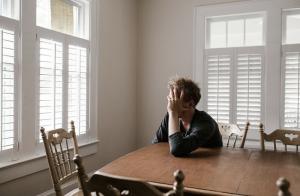Trichotillomania: the strange obsession with pulling out hair
The trichotillomania is a strange disorder characterized by the irresistible urge to pull your hair, usually the scalp, eyebrows, and eyelashes.
Despite the fact that individuals suffering from this pathology are aware of the damage that can be done by acting in this way, they are unable to stop or control this impulse. In addition, it is common that in moments of stress These individuals try to pull out hair as a way of calming down, thus creating a vicious cycle that can cause greater damage, both physically and psychologically.
What is Trichotillomania?
This condition usually appears around the age of 13 and is officially classified as an impulse control disorder, just like pyromania, kleptomania or the pathological gambling. It is also closely linked to Obsessive-Compulsive Disorder, since they share a large part of the symptoms and psychological mechanisms out of adjustment.
It has a prevalence of 1% of the population and affects both men and women, although the latter seek treatment more frequently.
Symptoms
 Trichotillomania is characterized by the presence of the following symptoms:
Trichotillomania is characterized by the presence of the following symptoms:
- Recurrently pulling out hair causing a notable loss of it (as can be seen in the photograph).
- An increased perception of tension just prior to or resisting hair pulling.
- Pleasure, gratification or liberation in pulling the hair.
- The disturbance is not explained by another mental disorder or medical condition.
- The alteration causes significant discomfort or deterioration in social, occupational or other important areas of activity. For example, a loss of self-esteem as a result of partial alopecia caused by hair pulling.
Warning signs
The onset of this disorder occurs around the age of 13, although in some cases it can start earlier. Frequently, a stressful event can be associated with this pathology, for example, changing schools, abuse, Family conflicts or the death of someone close can generate anxiety and nervousness and cause the debut of this disorder.
Some experts affirm that the symptoms can be caused, or at least strongly influenced, by the hormonal changes typical of puberty.
Most probable causes
The adolescence It is a critical stage for the development of self-esteem, body image, self-confidence, or intimate relationships. During this period, people who suffer from this pathology can be ridiculed by their own family, friends or classmates. But, in addition, these people may feel great guilt or shame for not being able to stop this type of behavior. Even a small patch without hair can cause serious emotional problems for the person suffering from this condition.
In many cases, people who suffer from trichotillomania manage to lead a normal life: get married, have children... But in some cases, there are individuals who avoid intimate relationships for fear of exposing their disorder.
There is no specific cause for trichotillomania. Although some researchers think that it is possible that at the biological level there is a neurochemical imbalance at the brain level, mainly a deficit of serotonin. There may also be a combination of factors such as genetic predisposition and an aggravating stress or circumstance. For example, a traumatic event.
Comorbidity (associated disorders)
It is common for people with trichotillomania to show symptoms of Obsessive Compulsive Disorder (OCD) like counting or washing hands. In fact, there are many similarities between trichotillomania and OCD, so some experts consider it a subtype of Obsessive Compulsive Disorder.
Depressive disorder is also common to occur in conjunction with trichotillomania. There may be a direct relationship between the neurotransmitters involved in depression and this condition (and also OCD), since both pathologies are associated with low levels of serotonin. Although there could also be a relationship between depression and the low self-esteem caused by trichotillomania, because pulling your hair can be demoralizing. On the other hand, hair pulling can cause wounds that cause physical and emotional pain.
Treatment
Trichotillomania can be treated in two ways, according to research conducted in this field.
1. Psychotherapy
On the one hand, cognitive behavioral therapy is very effective. On the other hand, and in some serious cases, the administration of drugs is necessary. However, the ideal is the combination of both treatments.
With cognitive behavioral therapy, patients learn to identify and manage symptoms and use strategies that help improve their quality of life. You can learn more about this type of therapy in our article: "Cognitive Behavioral Therapy: what is it and on what principles is it based?".
2. Pharmacology
Medication can also be effective in treating symptoms, although cognitive behavioral therapy is necessary for long-term results. Some medications (antidepressants or mood stabilizers) used to treat this pathology are:
- Fluoxetine (Prozac)
- Fluvoxamine (Luvox)
- Sertraline (Zoloft)
- Paroxetine (Paxil)
- Clomipramine (Anafranil)
- Valproate (Depakote)
- Lithium (Lithobid, Eskalith)



